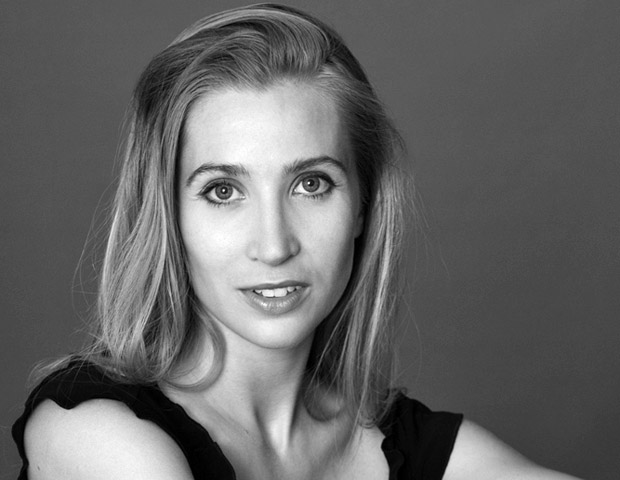
© Henrik Stenberg. (Click image for larger version)
kglteater.dk
kglteater.dk/about-us/cv/g/gudrun-bojesen
Gudrun Bojesen on DanceTabs
Gudrun Bojesen, the Royal Danish Ballet’s leading classical ballerina, is at an interesting stage of her career. A principal of the company since 2001, she still has several years of dancing ahead of her, but the compulsory retirement age is getting close enough to make her think seriously about what she will do next. She’s already taken on two big new roles this season: but when she talked to me, on the morning after her debut as Nikiya in La Bayadère, she was just about to start work on a project which may lead her in a quite new direction.
First of all, though, there were some things I wanted to know about Nikiya, and Alexei Ratmansky’s The Golden Cockerel
Nikiya and the Queen of Shemakhan
I had thought she would be perfectly cast in Bayadère, and her performance the night before proved me right – her first solo, in particular, was done with such expressive beauty that it rivalled my memory of Asylmuratova, my benchmark in the role. The production is new this season, and has been staged by Nikolaj Hübbe and the Bolshoi-trained Eva Draw, who has been working with the company for several years; it’s the first time Copenhagen has ever seen the ballet, and I wondered how familiar it was to Bojesen.
I knew it from videos, from the version of Makarova and the Rudolf Nureyev version – those were the two I had seen before. I never thought it would come to Copenhagen, I never dreamt of getting the chance to dance Nikiya.
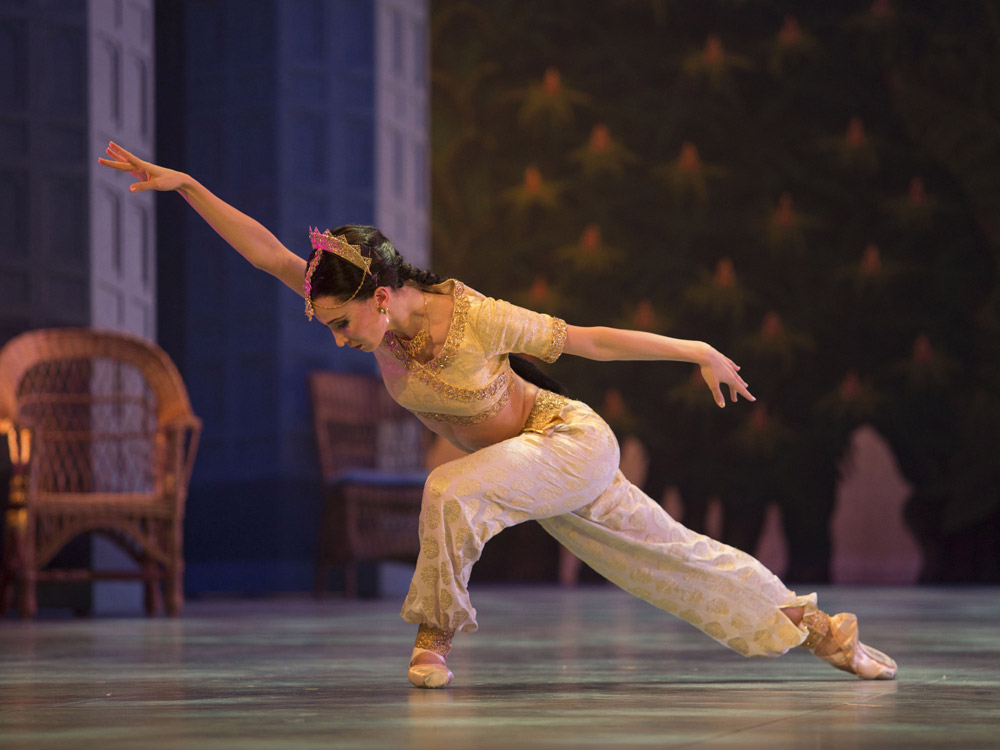
© Costin Radu. (Click image for larger version)
We learned it from Eva Draw, who taught us the steps from her memory. We started in late August, and we began with the third act, to get the style of the back and arms – Eva said this company is technically suited for it but needs the Petipa style, so we were working on the arms for Petipa, ports de bras and epaulements. Eva knows the company very well – she’s very well respected from her classes, and she has brought up a new set of young dancers in very good shape, and has taught us – the already established ones – alignment, a different alignment.
I was interested in a couple of things you did rather differently from how I’m used to seeing them – first of all, the quick section at the end of the solo just before Nikiya dies, where you seemed desperate rather than suddenly cheerful. Was this your own idea, or Nikolaj’s?
A bit of both. In the second act solo, Nikolaj was clear that she wanted to leave after the second part but the aya stops her from running out, so she’s bound to finish her dance. Nikolaj also thought it was strange if she suddenly got very happy in the fast bit, so he didn’t like us smiling – he said if we really wanted to smile it should be as a temptress, that we should try all our feminine tricks as a last hope – but I chose to make it more as feeling trapped, a cry for help, and he didn’t object.
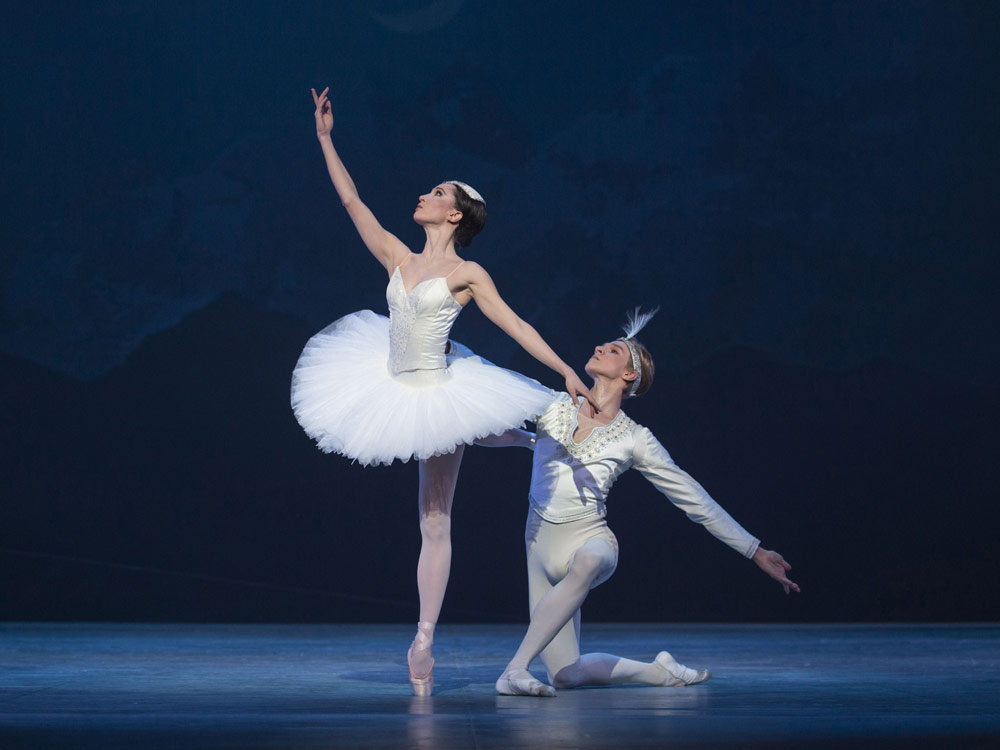
© Costin Radu. (Click image for larger version)
The other bit was the beginning of the Shades scene, which of course had to be rather different because in this production it isn’t Solor’s dream – he has killed himself so it’s the ‘reality’ of your reunion in some sort of afterlife. You seemed quite cold towards him at first…
At the beginning of that act I felt a little bit of resemblance to what I feel in Giselle … I was bringing in my Giselle mode, so I was not warm. I was just a shadow, so if he wanted to touch me that was fine, but also I could be on my own. That was the feeling… that I didn’t actually recognise him at first and only recognised him and forgave him later on.
It came over very well. I also liked Richard Hudson’s décor very much, and you looked good in the costumes he gave you – were you comfortable with them?
Yes – especially compared with the one he did for me in The Golden Cockerel – I would really say that was the first time I was not happy with my costume.
Why – was it uncomfortable, or difficult to dance in?
It was so against my belief of what that part [The Queen of Shemakhan] is about. Usually they can put me in anything – but The Golden Cockerel I had rehearsed being a very mysterious temptress – very exotic, sensual, with small hip movements and all these details I thought I had worked out. But when I got into the costume I thought it had been a waste of work because it covered all my small movements, and on top of that it took away the seriousness of the part, it became comical… I felt like I was wearing a bag. I really tried to alter it and I did get a few changes, but I think the look they wanted was so different from what I had expected, so I had to change the role because of the costume.. It brought in some humour but … It was nothing to do with Alexei’s choreography or anything. I was so happy working with him – we danced together in Sleeping Beauty when he was in the company and I was very young, and he was coaching me, and he was so nice to me – but the whole piece took a different turn from what I expected.

© Per Morten Abrahamson. (Click image for larger version)
I didn’t know you’d danced Aurora before – I remember you missed it through injury a couple of years ago when Christopher Wheeldon’s production was new – are you going to be doing it this time, in the run up to Christmas?
No – I’m on leave of absence now – that why I’m smiling! I need a break from taking the pressure always in the big lead parts. Last year Nikolaj asked me to make a new production of La Ventana and I negotiated with him that I would do the first part of the season and then take a leave of absence to prepare for it. I’m looking forward to taking a little step out of the theatre.
La Ventana
La Ventana (The Window) is a little Bournonville piece – 25 minutes at most – set in Spain: there’s a thread of a story about a senorita who hears her lover serenading her under her window but basically it’s an excuse for lots of lovely dancing. It starts with a famous mirror dance and also has a pas de trois which is sometimes danced on its own. It had a new staging for the Bournonville Festival in 2005 but hasn’t been in the repertoire since then. I didn’t remember much of it from 2005 but recently saw a video of a performance from 1968, with Kirsten Simone and Flemming Flindt, and found it absolutely charming.
It’s lovely – I’m really looking forward to bringing it back. Nikolaj suggested I should use the décor we had before, but I asked him if I could use a different one, maybe bring back an even older version that I liked better. He said “Well, you have no money, but if you can do it with what we have in the house, you are free to try other sets.” I liked the one from 2005 but there were bits of it I didn’t find very Spanish.
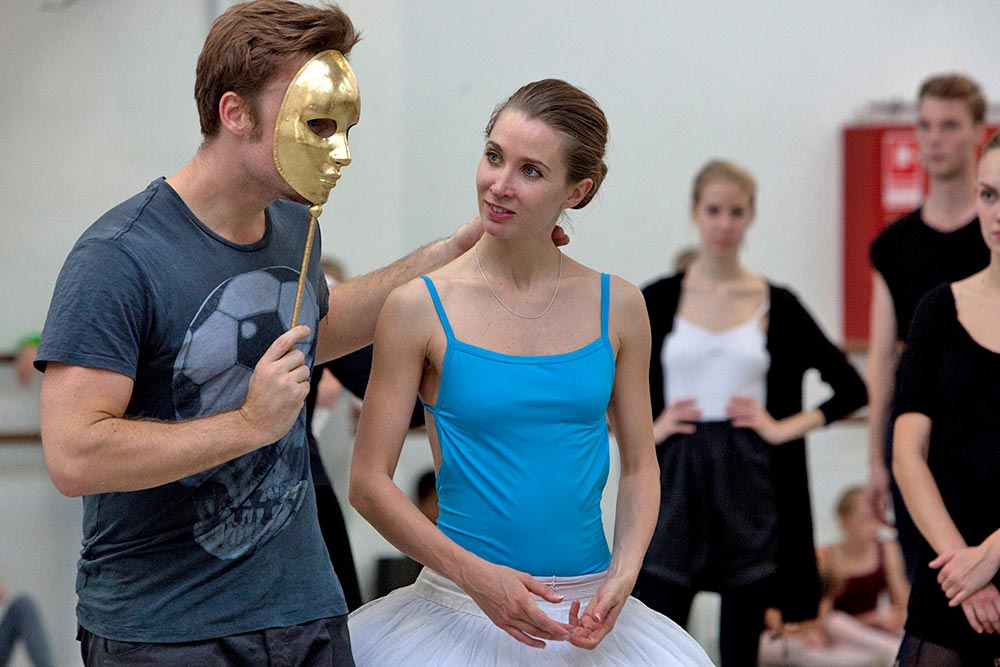
© David Amzallag. (Click image for larger version)
I’m going to let that Flemming Flindt video inspire me but add to it a much more Spanish setting and temperament. Also I have asked to have the music rewritten for guitar and flute at the beginning, because I didn’t like the sound of the orchestra when there’s only one person on stage – the senorita for the mirror dance: I thought the music should have a much more intimate sound.
I was a bit reluctant when Nikolaj first asked me to do it because I don’t want to follow the tradition of ‘I’m a principal dancer so I can do whatever I think’. Workmanship is important in each part of the house – an instructor should have an educational background – otherwise it links down and it becomes a weaker place. That’s why I asked him to have a leave of absence so I could prepare myself at least for 3 or 4 months, sort of educate myself in some sort of way.
So what do you plan to do?
I actually started this summer, when I had the opportunity of choreographing for Maria of Buenos Aries – the tango opera by Astor Piazzolla – it turned out to be a great experience. I had two tango dancers and two ballet dancers. It was in a small theatre outside the centre of Copenhagen – we had four shows, completely sold out, at the beginning of August, and it was so much fun, I really liked it. So that was my first move.
And then I will learn the steps and decide what versions to use, pick from each video and decide what I want, so that we’re not learning from video, we’re learning from my decision. And then there’s music that I wanted to change – I want a guitarist, and I want a singer on stage, and I want to have a way for them to work with the dancers closely, so that it doesn’t become a surprise in the last minute that the music is different. I have learnt from experience the value of having the music and costumes early in the process, rather than just adding them 4 days before the premiere.
And will you have a designer, or will you really just have to use what you can find?
I have a very good set and lighting designer, Danish, Steen Bjarke, and he has a lot of good ideas for the Spanish touch I wished for sets and lights. It will be very minimalist, and the costumes are from Hans Brenaa’s version, I think – I haven’t decided yet but it’s all hanging in the theatre and so…
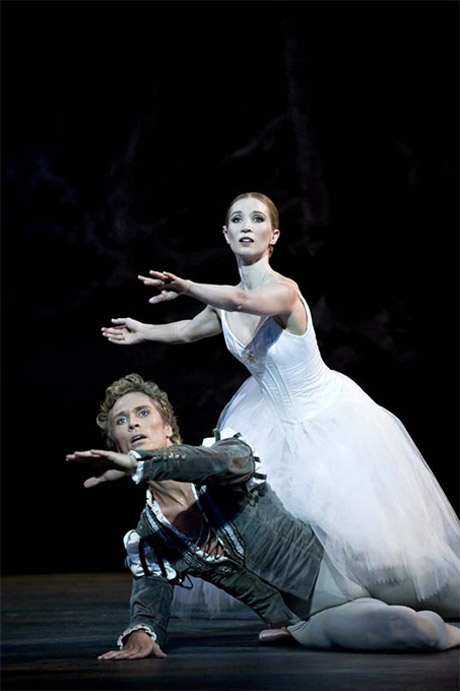
© Henrik Stenberg.
People always say about a Bournonville ballet, it shouldn’t be a museum piece – but I’m actually heading to making it a museum piece. I want it to be like a little treasure in a museum, having the essence of Spanish life and Bournonville. Nikolaj asked me if I wanted to move it to a more modern time but I thought , no – I have no wish to change it into modern people in jeans. I don’t think we need to update it – in fact I almost want to make it more original – we’ll see how it goes.
Bournonville and the Royal Danish Ballet
Bojesen is as well placed as anyone to talk about the Bournonville tradition: apart from her own education – she joined the school when she was 8 – and her experience of dancing many of Bournonville’s major roles, her family has a direct link back to the choreographer himself through her great aunt Edel Pedersen, who was associated with the company for more than 50 years. She was a pupil of Hans Beck, whose stage debut was watched and admired by Bournonville only a couple of days before he died, and when Bojesen visited her she would push back the furniture and demonstrate steps and ports de bras.
I asked if Bojesen really felt that the company was less Danish than when she joined, and if she thought the change was healthy:
Yes – I think it’s very healthy to have influence from outside. What I don’t like so much is that the Bournonville tradition is not being taught daily – over some periods of time at least – so we have dancers who have been here maybe four years and don’t know the Bournonville schools. I have plans for that, because I find it wrong that you can go abroad and see people knowing more about the style than here.
The thing that we could have more of at the moment is the joy of dance. That is the number one thing, the number one message in Bournonville, and I think we’re losing it a little bit – the technical level is rising in our company and the dancers are looking better and better – but it could have a little bit more of the freedom and the joy to it.
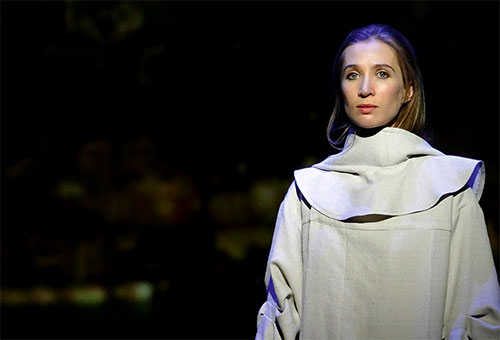
© Costin Radu.
Do you think that has anything to do with the problems the company’s been going through in the last couple of years?
No, it’s the focus from the management side – where do you put the focus? I don’t think any management can do everything, so it’s maybe taken a turn in the direction of control and pure technique, and I think we have to be careful not to go too far in that direction. We need to add the joy of dance and the Danish spirit and charm into it, along the way.
I guess Nikolaj could argue that these days you have to have a certain level of technical competence first and then you can start putting back the Danish accent, but what we in the audience worry about is that everywhere will get to look the same. It will be a terrible loss if that happens, particularly here which has always been unique.
I feel a little bit from Nikolaj’s side that he knows that what we had was a little treasure, but that it had to be polished in order to be respected, and I can see his point in that we need the technical level up and the discipline and everything, but along the way we cannot lose sight of the treasure and I’m happy to get the chance to start working with the dancers and keep the focus on that and the warmth on stage.

© Henrik Stenberg. (Click image for larger version)
The future
That leads me on to ask about how you see your own future: would you like to teach?
Yes, but I do think that there are other people much better at analysing steps than I am. I don’t see it as my strength to build up the new generation but I would love to teach them Bournonville – I’d love to teach them my love for Bournonville.
And would you like to try more choreography?
Yes – when I did it this summer for the tango piece I think it came out a success – but I think I have no right… I feel I should start out in a smaller business – because I haven’t actually been taught choreography. I know that Ratmansky, during his young dancing years, had this education for 4 years and the way he was taking rehearsals and the way he ran rehearsals you could see that he knew what he was doing. I’m a little bit annoyed with people who don’t take it seriously and see it as ‘Oh, if I can dance myself then I can just throw out some steps’. It is a task which you have to work to get to handle.
Would you see yourself spending your whole career in Denmark?
Not the rest, no. I have a longing for going abroad – I haven’t actually fixed a spot or place but… I’ve had the longing for so long. There is the fact that everybody knows me here, through the theatre: this summer I applied for money for the tango ballet, and I got money – so there are some advantages in staying in that sense, but I guess the adventurous in me wants to seek abroad. I have a feeling that both with dancing and music we almost have to go out, because of our non-existing language barrier. When Frank [Andersen] invited me to Japan two years ago, I really enjoyed being there and teaching – I could see myself teaching the Japanese people. I don’t know if he will want me to come next time, but I performed La Sylphide with them, with Emmanuel Thibault and we got a very good friendship and I felt good.
Earlier this season Bojesen danced La Sylphide with Thomas Lund at his farewell performance, and I wondered how that made her feel – was she counting the years she has left, is she afraid of the change, or does she look forward to moving on?
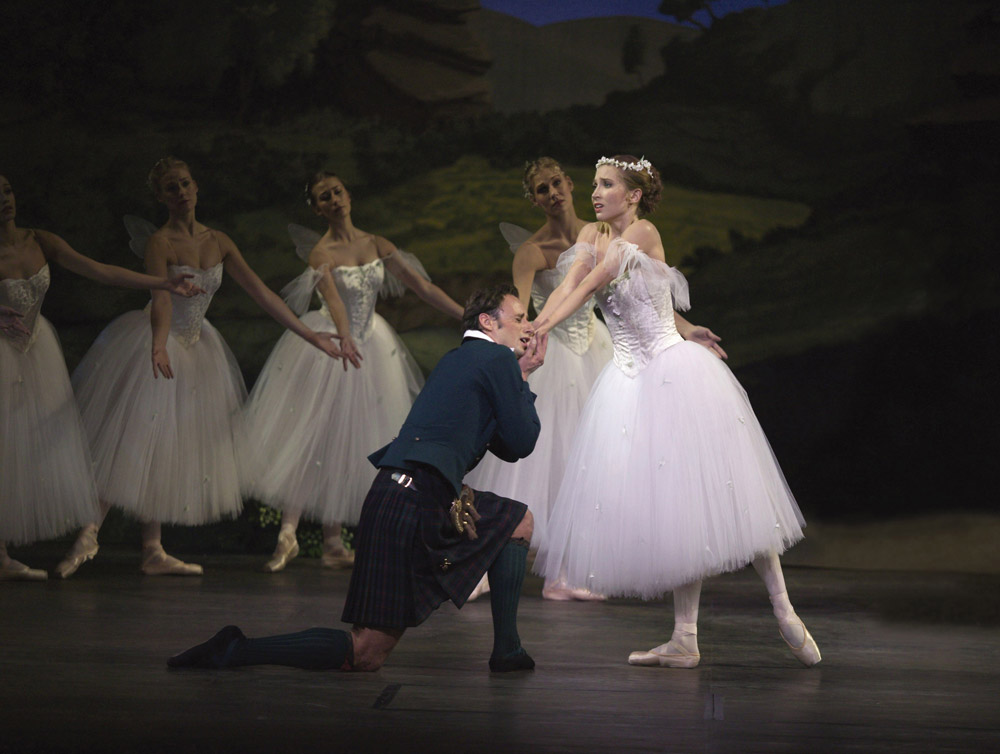
© Huset Mydtskov. (Click image for larger version)
I have some moments of being scared – just the fear of the new, the whole thing – I think it’s understandable. I’ve had it in cycles – I had it six years ago, actually, I had a moment of thinking maybe I’ve had enough and it would be a good time to quit, before you’re just dancing because you have to because of the pension – it was a moment of reckoning up and deciding if I really wanted to continue: but then it went away. Now with Thomas leaving I have the same feeling again, of wondering if I did the right thing, wondering if there’s something waiting for me, and also the family issue – I wonder if I have left the opportunity to have a family of my own too late. But I am looking forward to my work on La Ventana and I would really like to do more of that sort of thing in the future.
… and some backward glances
Are there roles you regret not having done? Juliet, for instance?
No. I don’t regret Juliet now, though when I was younger I really wished for it.
What do think of as the big landmark roles in your career?
Definitely Tatiana in Onegin, and La Sylphide – those were the big landmarks.
I’ve only seen you as Tatiana once, on Kenneth Greve’s last night…
I had a very good partnership with Kenneth – we also did Little Mermaid together. I really enjoyed dancing with him. There’s one thing I really regretted – we once worked on Spring Waters and we actually got it up running – we did it once in the studio, completely full out – just for fun – and I must say I regret not having the chance to show it. I think we were quite spectacular that one day! You need a safe feeling, and then his height made it so much more exciting…
That could have been quite something. And one performance that did happen, and the one I most regret missing, was the night Bojesen and Lund danced Swan Lake together – a one-off which will never be repeated. The doyen of Danish critics, Eric Aschengreen, described it as ‘one of those nights when the lightning strikes’. I’d seen them both earlier in the run with different partners …
We’d had a rough rehearsal time before that – he had worked with Jurgita [Dronina] and I had worked with Alban [Lendorf] and we both had a hard time, I think, adjusting back to our usual partnership – but then on stage it fell completely into place. What’s so wonderful about Thomas is that he’s so stable on stage and he doesn’t change – he doesn’t suddenly alter what we’ve rehearsed, he gives you the exact security you need so that you can be expressive on top of that – and then he can do his own expressiveness when it’s his time.

© Costin Radu. (Click image for larger version)
And it’s sad that ‘his time’ is over – but Bojesen is now dancing with the younger principal men – Ulrik Birkkjær and Marcin Kupinski as well as Alban Lendorf – who should benefit hugely from the experience.
Finally, I read somewhere that when she was a teenager she had to make a choice between becoming a concert pianist or a ballerina – does she think she picked the right one?
Did I really write that? I never saw myself as that talented – I had a big passion for music and I won some competitions with the piano but I never thought I could be good enough to make it as a concert pianist – and I never wanted to, because the thought of practising on my own for 8 hours a day, I never wanted that.
So I guess that’s a yes. I hope to see Bojesen on stage many more times before she finally stops dancing, but it sounds as if her eventual retirement will just be a step on the way to a new career in the wider world of dance.










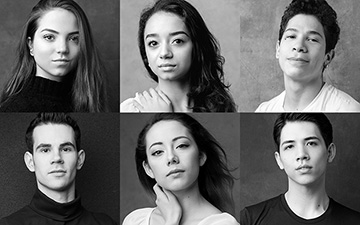
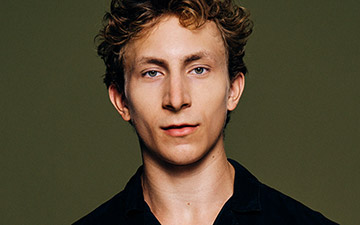
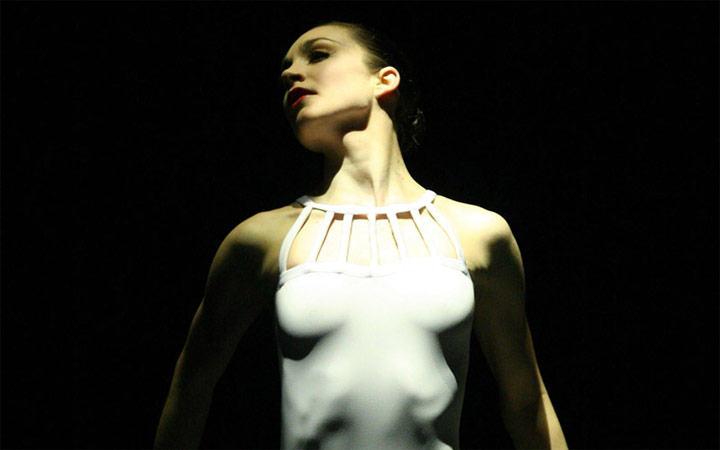


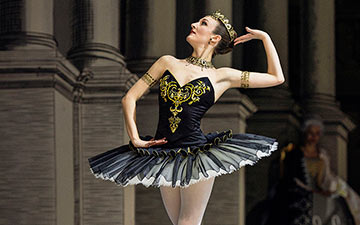
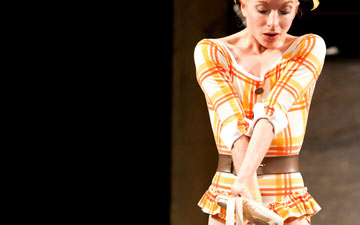
Lovely interview Jane. Thanks
Bojesen’s La Ventana sounds wonderful… finally, someone who wants to look back in time rather than put everyone in jeans… Her performance of La Sylphide was one of the highlights of the company’s performances in NY a few years back. Hope they come back soon. Lovely interview.